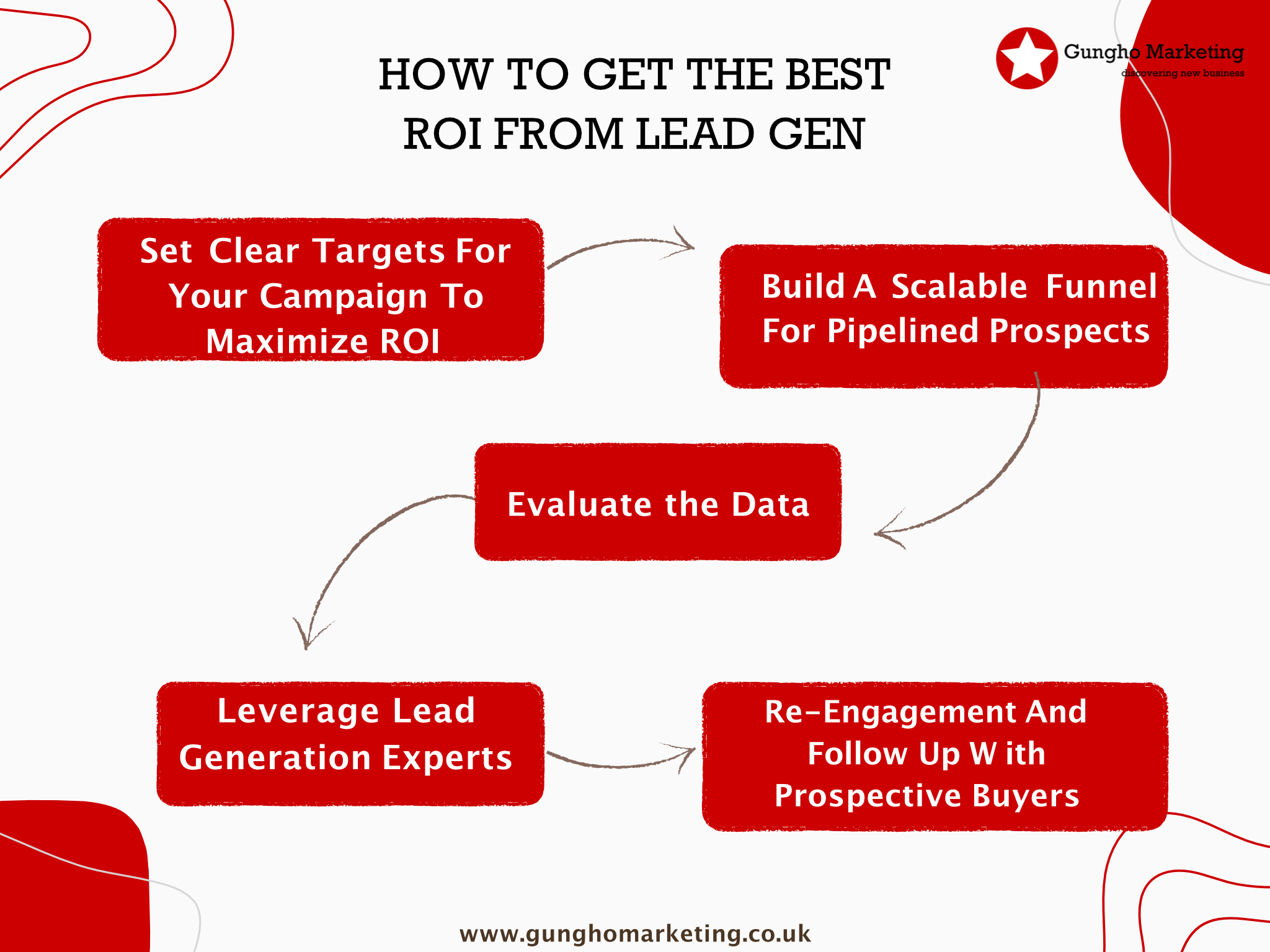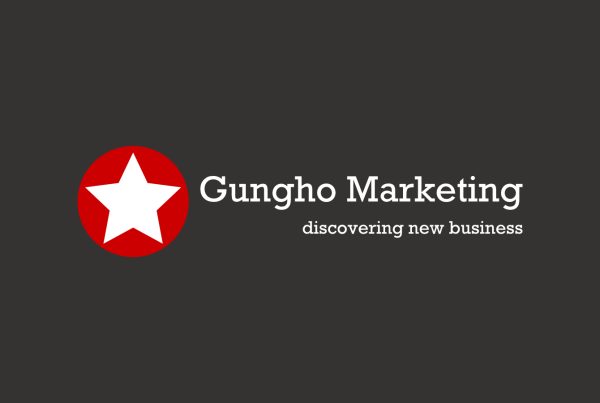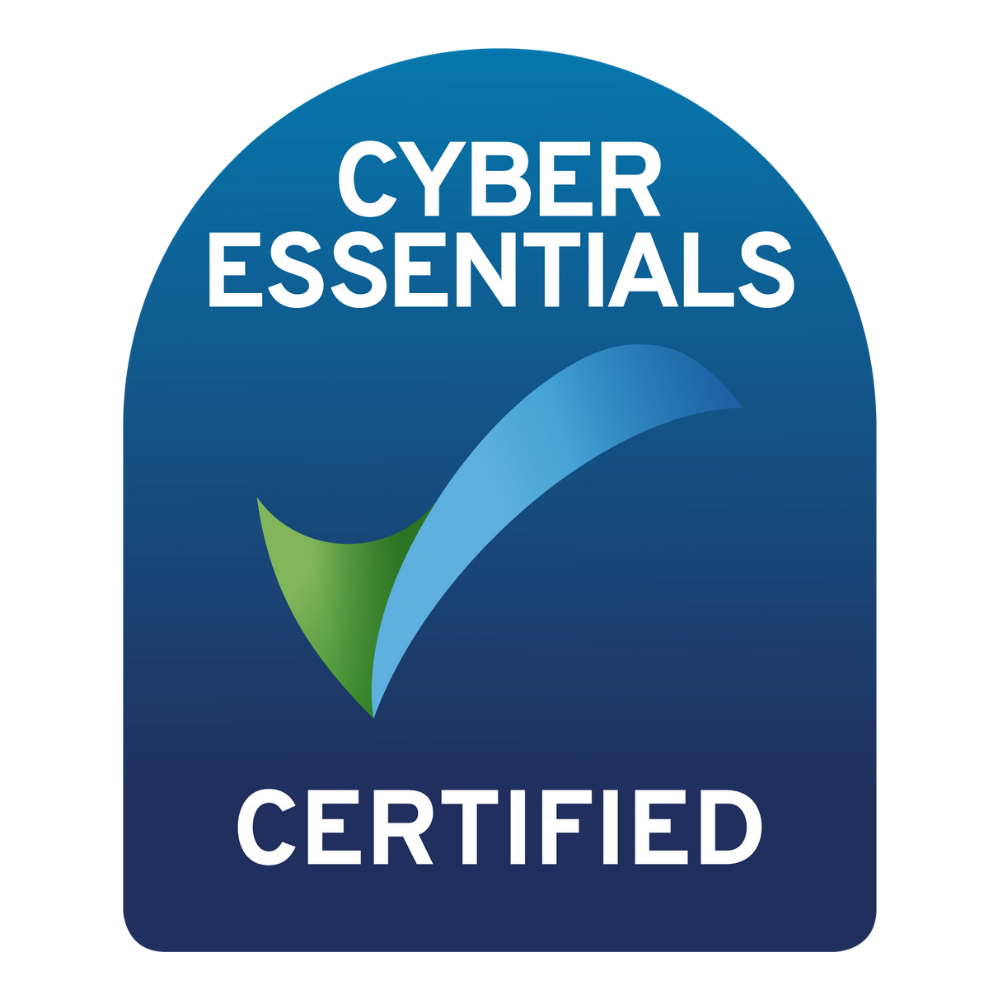
It’s no secret that a steady flow of sales leads is essential to any business looking at long term, consistent growth. To obtain the best return on investment from lead generation, the work isn’t done when a prospect agrees to an appointment or accepts your connection request on LinkedIn…
This is where having a bulletproof sales funnel comes into action. You need to be considering a huge amount of factors, from where your SDRs are prospecting into, the messaging being used, whitepapers, email sequences, lead allocation, re-engagement and much more if you’re looking to maximize the return on every lead in the pipeline.
Getting The Best ROI From Your Lead Generation Campaigns

When aggressive growth plans are on the horizon, it’s more important than ever to be structuring your lead generation campaigns to allow for the best return on investment. Regardless of the industry or the offering, it’s crucial to have an airtight workflow from day one to maximize the potential returns.
Looking back over the last 15 years, Gungho has worked with hundreds of RegTech’s delivering successful appointment setting campaigns with extremely well-calibrated sales funnels. These are the 5 most important pieces of advice for really moving the needle:
1. Set Clear Targets For Your Campaign To Maximize ROI
It’s crucial when starting any kind of lead generation activity to have a clear focus in mind on what you want to achieve and where you should be focussing. This usually involves bringing together various stakeholders in your organization to align focus and understand where the low hanging fruit can be found.
There is little point in generating leads internally or even outsourcing to a B2B lead generation company if those leads have no commercial value. We would recommend taking a look at your existing pipeline to see which markets are responding well to your messaging and value proposition – This could be a great place to start doubling down on your prospecting efforts.
The more granularly your sales team can look at the data, the more laser targeted your lead generation will be. Here are some targeting ideas and questions we have used to get the ball rolling with some of our client’s:
- What size of business are you wanting to target? (Employee size or revenue-based)
- What regions are you prospecting into?
- Are the prospects international or domestic?
- Are you targeting Financial Services or Corporates? (Bring this to an even more granular level. E.G Oil & Gas companies, or Food Manufacturing).
- What are the Job Titles of your key influencers?
This should enable you to target your lead generation campaign, however, we would still argue that there is more work to be done in the planning stages to maximize the ROI you’ll see from your outreach. This comes with qualifying potential prospects in or out of your pipeline.
Not all leads are created equal, it’s important to understand the prospect’s requirements and the potential use case before taking the conversation too far through the funnel. We aim to gather as much information as possible on the initial outreach in order to identify the prospect’s pain points and gather key information – Here are some of the questions we would be asking on that initial call:
- Are you the budget holder and decision-maker?
- Do you have a budget for this, this year?
- How are you currently managing this area…
- What are your pain points – what needs to be addressed? Is this something that we can help with?
These are just some of the qualification questions we used to generate over 1000 qualified leads for one of our customers. Unless your offering requires anything more specific, using the standard BANT qualification should be enough to get your sales team in motion!
2. Build A Scalable Funnel For Pipelined Prospects
Whether it’s your in-house team building leads or you’ve outsourced to a B2B telemarketing company, it would be a crying shame to see your warm leads turning cold due to a lack of follow up. At the start of a lead gen campaign, it’s easy to cut corners and not get the necessary processes in place, however, we’ve seen a huge return on investments for some of our clients within the first 16 weeks of a campaign by having robust processes in place from day one.
Some examples of these processes would be…
- Ensuring SDRs have access to your calendar to check availability
- Automated email sequences to keep prospects engaged
- Up to date whitepapers and one-pagers
- Knowing which sales reps are taking which leads
- Sector-specific presentations for prospects
- Plugging your lead generation efforts into a CRM like Salesforce or Hubspot
Even small details like having working dial-in details for international prospects can make a huge difference in how effective a lead generation campaign can be. We would recommend getting all of the finer details worked out before prospects start walking through the door (if only it was that easy!).
3. Evaluate The Data
Taking a deeper look at the data is where the real improvements and return on investment are going to be made. If you or the sales team are brushing data under the rug, there could be a huge number of potential opportunities slipping through the net each month that can drastically change the success of your lead generation efforts.
In an ideal world, you would have your SDR team or outsourced lead generation team plugged into your CRM so that everything can be tracked in one silo. However, this isn’t always possible and there is always a need for some manual processes – especially when it comes to extracting the data and looking for those missed opportunities.
Some meaningful data points to evaluate would be…
- Are the appointments which are being set matching the initial brief?
- Are the appointment setting team identifying prospects that have a need?
- Are SDRs regularly checking in with prospects?
- What do the sales qualified leads have in common?
- Are certain industries more susceptible to the messaging?
Looking at these metrics over the first 16-20 weeks of your appointment setting or lead generation campaign is important in driving that ROI in the right direction. It may be that subtle tweaks are needed in the messaging which could convert an extra 10% of prospects into sales qualified leads. Conversely, for example, it might be that the Insurance sector is very receptive to your offering but credit unions aren’t – In this example, pulling focus out of credit unions and putting extra outreach to Insurance firms would help increase the number of opportunities and your return on investment.
4. Leverage Lead Generation Experts
When it comes to hitting the ground running and driving results from day one, outsourced lead generation and appointment setting companies are able to get things moving much faster than in-house teams.
There are huge benefits to using outsourced B2B lead generation, these are some of the points our clients have highlighted to us:
- Leveraging a proven track record of successful strategies to drive ROI
- Instant scalability with a global reach
- Outsourcing allows your sales team to focus on the important part, selling!
- Having access to a deep, industry-specific knowledge to help maximize returns from your lead generation
- Ability to leverage a huge pool of potential prospect data
- Having access to a range of reporting functionality and dashboards to track KPIs
When we boil it down, the important metric is the ROI generated from your appointment setting efforts – Outsourcing to a specialised lead generation company can expedite this, you have access to a team of SDRs without needing to scale your internal headcount or amend your infrastructure.
To learn more about outsourcing lead generation, have a read of our client case studies.
5. Re-Engagement And Follow Up With Prospective Buyers
Sometimes it cannot be helped – leads do go cold at some point. Once that threshold of ‘I’ll give them a week, they must be busy’ is crossed, and you’re losing engagement, your approach needs to change.
From a commercial perspective, you have already invested in that lead, and at this stage, you will have all the information regarding that lead right in front of you. Just because the timing might be slightly off for the buyer, doesn’t mean it’s time to give up yet!
We recommend creating re-engagement style messaging to help win back any lost opportunities – This might come in the form of a sequenced email approach or even a Linkedin campaign, whatever you decide is the best approach, your new goal is to continue to keep your brand in the prospect’s mind.
This ties in nicely with the earlier point we made around building a scalable funnel. In an ideal world, all of your prospects will be marked up in your CRM system so it should be no hassle on your end to revisit every few weeks or months, with a highly targeted approach.
In Summary – How Can You Increase ROI From Lead Generation?
These are 5 of the steps your sales team can take to increase the ROI from your lead generation campaigns over the coming months. We have seen success from our clients in the RegTech sector by implementing these same action points.
Interested in working with Gungho Marketing to grow your pipeline? Get in touch today








